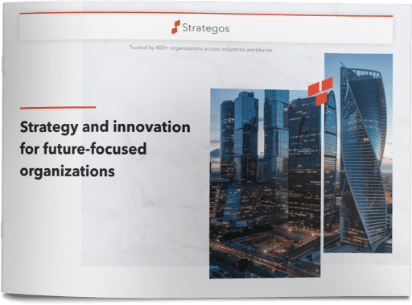
A lot of people are looking for “brand strategy”. Why? One reason is because brand power and influence are much more difficult to obtain in this era of empowered consumerism. Empowerment comes from increased access to information and through a shift in trust from experts to peers. This shift isn’t simply a change in the way buying decisions are made. Peer-to-peer sharing is a broad and deep cultural shift. Collaboration impacts how learning is done in the classroom, how teams work in business and also how consumers relate to brands.

Another reason is that expectations of a brand have widened dramatically over the years from a logo and slogan that encapsulate the essence of a product to the full consumer experience (awareness to acquisition to use to advocacy – or not). We’ve moved from Chock full o’ Nuts to Starbucks; from descriptions to experiences. What do you think of when you think about Disney? The movies? The characters? The theme parks? The cruises? Disney is all these things under one brand identity. The aspiration for a brand is a profitable, growing business, not a label.
Seasoned, experienced business people are looking for brand strategy because the forces of fragmentation and expansion create a challenging environment for any brand to reach customers and to deliver value. We urge our clients to rethink how they are approaching brand strategy in order to master the demanding environment. At Strategos, our point of view about brand strategy reflects current reality and challenges. We define brand strategy more broadly than segmentation and communication. We believe that brand strategy is a component of business strategy and the entire business model must be addressed to build a compelling brand story.
Brand vs Business Model
At Strategos, we see the marketing mix as a critical part within a more complete business model.

- The business model elements are:
- Who is the customer? Unmet needs, markets and segments, customers or consumers
- What do we provide? Products & services, emotional & functional benefits, experience provided
- How do we provide it? Marketing, channels, supply chain, operations, partnerships & alliances
- Why is it different? Right to win, core competencies, competitive landscape, differentiation
- Where do we make money? Sources of revenue, value levers, cost drivers, pricing tactics
The customer and the benefits delivered are at the core of all brand work. Strategos’ more comprehensive approach is especially helpful in today’s environment. For example, the supply chain, operations and partnerships can critically impact brand perception in this age of transparency and sustainability. Communicating the brand essence is not enough. The brand identity must be authentic and robust reaching into your supply chain, production and channels.
Other things we’ve learned:
- Brand strategy is most useful at the category level, not the product level – stepping back to evaluate the entire category can spark growth. Disney’s business and brand began with animation but expanded to family entertainment.
- Brand identity can be an input to business strategy or an output – an existing strong brand asset such as Apple can be an input; an output example would be Uber as a brand that emerged from a radical new business model.
- Brand communications (media campaigns) are best considered as a thread on your strategic migration map instead of a dimension of competition – growth is the aspiration for all brands and can be achieved through multiple approaches, including, but not limited to communications. Mini Cooper has a rich history of creative media campaigns but the campaigns are a means to an end, not the end itself – they communicate the essence of a fun, quirky, customizeable car. We routinely ask clients to identify “what’s the thing?” – the essence of their brand’s competitiveness. If what you find when you ask yourself this question that you’re attempting to make your communication plan the “thing” rather than focusing on the value delivery equation in your business model, you’re missing something important.
- Brand positioning is more robustly described through brand attributes on what we call an industry map, showing all brands’ bases of differentiation, than by a demand landscape based on usage occasions and buyer personas – an industry map is more comprehensive since it includes other critical stakeholders, partners and competitors, and focuses on how we will be different and play to win, not just on where dollars are being spent today. Well-meaning efforts to keep the customer as the focus of branding have led to overreliance on segmentation, which in turn is often over-simplified into static market maps. The result? Conversations such as “Gee, look at all of the money being spent by striving moms on breakfast! We need a mom-breakfast line for our energy drink business now!” Segmentation of existing market behaviors is a tool. It won’t give you all the answers to building a profitable business.
Turning your brand into a business asset

So what brand has done it right? One clear example is Crayola. Crayola took a strategic approach and has transformed their business from coloring sticks to creative play. Strategos worked with Crayola on the original strategy project that expanded their brand and their business.
You can start rethinking your brand too. Try stretching what you consider your category to see if there are natural areas of growth. List brand perceptions from stakeholders in addition to customers to see if the benefits you deliver are consistent. Compare the brand promises of your suppliers and partners to yours in order to check for consistency. Look at what your competitors are doing and derive their strategy from their actions.
If you do this well, some obvious opportunities should emerge. Get started on any quick wins that become evident from this assessment, and use the initial successes to fuel the appetite in your organization to do what it takes to turn your brand from label to business asset.




